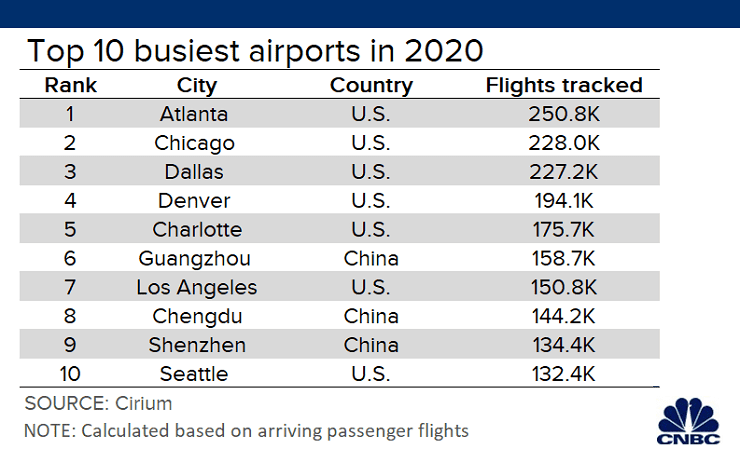A passenger checks flight information on a board in the departures hall at Madrid Barajas airport.
Paul Hanna | Bloomberg | Getty Images
SINGAPORE — More than two decades of growth in airline passenger traffic were erased in 2020, a new report found.
“The pandemic and its consequences wiped out 21 years of global passenger traffic growth in a matter of months, reducing traffic this year to levels last seen in 1999,” said Cirium, a travel data and analytics company.
“In comparison to last year, passenger traffic is estimated to be down 67% in 2020,” the firm said in a press release.
Only 2.9 trillion global revenue passenger kilometers (RPKs) were recorded in 2020, versus 8.7 trillion in 2019. RPKs are used as a measure of airline traffic.
The aviation industry was hit hard by the coronavirus pandemic, as countries closed their borders in a bid to stem the spread of the disease.
According to Cirium’s data, airlines operated 16.8 million flights from Jan. 1 to Dec. 20, 2020. That’s down from 33.2 million in the same period in 2019.
More than 40 airlines completely ceased or suspended operations, and experts expect more to fail in 2021, according to Cirium.
Road to recovery
Asia-Pacific and North America were the “fastest to establish themselves on the long path to recovery,” according to Cirium’s Airline Insights Review 2020 report.
That trend was reflected in Cirium’s list of the world’s busiest airports, which was dominated by airports in the U.S. and China.
Acknowledging that major cities such as New York , Beijing and Shanghai were missing from the list, David White, a vice president of strategy at Cirium, told CNBC it appears that airports such as New York’s John F. Kennedy have been “disproportionately impacted due to their international traffic in normal times.”
“Airports such as Minneapolis, O’Hare (Chicago), [Dallas-Fort Worth], Atlanta and Charlotte have significantly higher traffic than JFK now due to the volume of domestic flights at those domestic hub airports,” he said. A similar pattern was reportedly observed in some Chinese airports.
International flights fell 68% compared to 2019, while domestic travel was down 40%.
Cirium expects passenger demand for air travel to bounce back in 2024 or 2025, with domestic and leisure traffic being the first segments to show “sustained recovery.”
